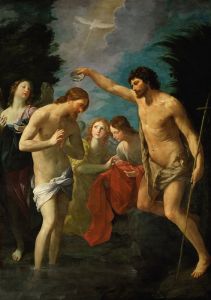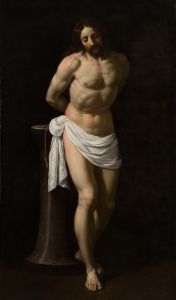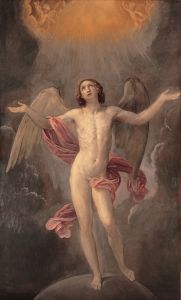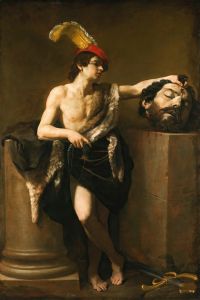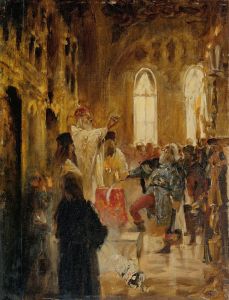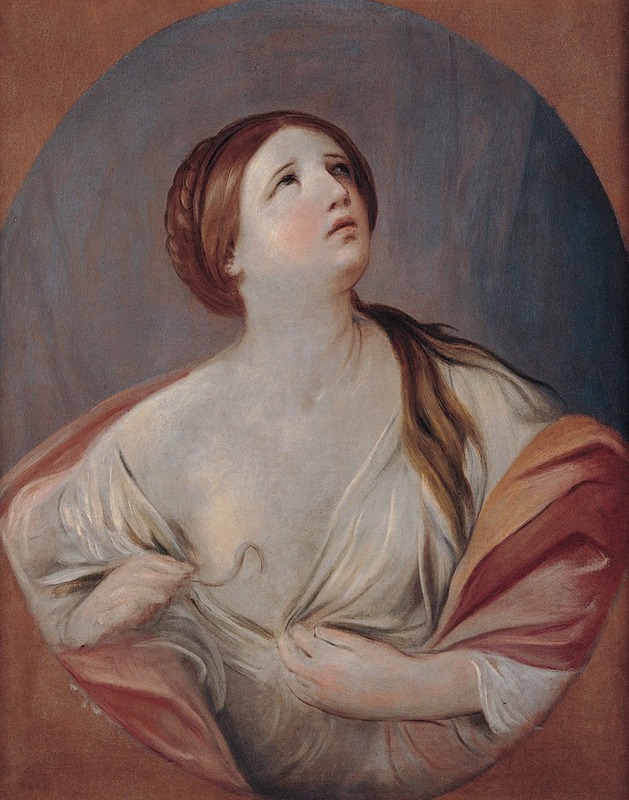
Cleopatra
A hand-painted replica of Guido Reni’s masterpiece Cleopatra, meticulously crafted by professional artists to capture the true essence of the original. Each piece is created with museum-quality canvas and rare mineral pigments, carefully painted by experienced artists with delicate brushstrokes and rich, layered colors to perfectly recreate the texture of the original artwork. Unlike machine-printed reproductions, this hand-painted version brings the painting to life, infused with the artist’s emotions and skill in every stroke. Whether for personal collection or home decoration, it instantly elevates the artistic atmosphere of any space.
Guido Reni's "Cleopatra" is a notable painting by the Italian Baroque artist, renowned for his classical style and masterful use of color and light. Reni, who lived from 1575 to 1642, was a prominent figure in the Bolognese School of painting, and his works are celebrated for their graceful figures and serene compositions. "Cleopatra" is one of his many portraits that exemplifies his skill in capturing the beauty and complexity of his subjects.
The painting depicts Cleopatra, the last active ruler of the Ptolemaic Kingdom of Egypt, who is a figure of enduring fascination in art and history. Known for her intelligence, political acumen, and legendary romances with Julius Caesar and Mark Antony, Cleopatra has been a subject of artistic representation for centuries. Reni's portrayal of Cleopatra is consistent with the Baroque era's interest in dramatic subjects and emotional intensity.
In Reni's "Cleopatra," the queen is often shown in a moment of introspection or impending tragedy, reflecting the dramatic end of her life. The painting captures her in a contemplative pose, often with the iconic asp, the venomous snake that, according to historical accounts, she used to end her life. This imagery is a common motif in depictions of Cleopatra, symbolizing both her royal status and her tragic demise.
Reni's use of light and shadow in "Cleopatra" is particularly noteworthy. His technique creates a sense of depth and highlights the delicate features of Cleopatra, emphasizing her beauty and the poignancy of her story. The soft, luminous quality of the skin tones and the rich, textured fabrics in the painting are characteristic of Reni's style, demonstrating his ability to convey both physical and emotional nuances.
The painting is also an example of Reni's skill in combining classical ideals with Baroque dynamism. While Cleopatra is portrayed with idealized beauty, there is also a sense of movement and tension in the composition, reflecting the dramatic narrative associated with her life. This blend of classical and Baroque elements is a hallmark of Reni's work, showcasing his ability to adapt traditional themes to the stylistic innovations of his time.
"Cleopatra" by Guido Reni is housed in various collections, with versions and copies existing in different museums, reflecting the popularity and influence of Reni's work. His paintings have been studied for their technical brilliance and their ability to convey complex emotional and historical themes.
Overall, Reni's "Cleopatra" remains a significant work within the canon of Baroque painting, illustrating the enduring allure of Cleopatra as a subject and the artistic mastery of Guido Reni. The painting continues to be appreciated for its aesthetic qualities and its contribution to the rich tapestry of historical and mythological representation in art.






![One of two colossal statues of Rameses [sic] II. Entrance to the Temple at Luxor.](/imgs/217522/s/david-roberts-one-of-two-colossal-statues-of-rameses-sic-ii-entrance-to-the-temple-at-luxor-473c42e1.jpg)




